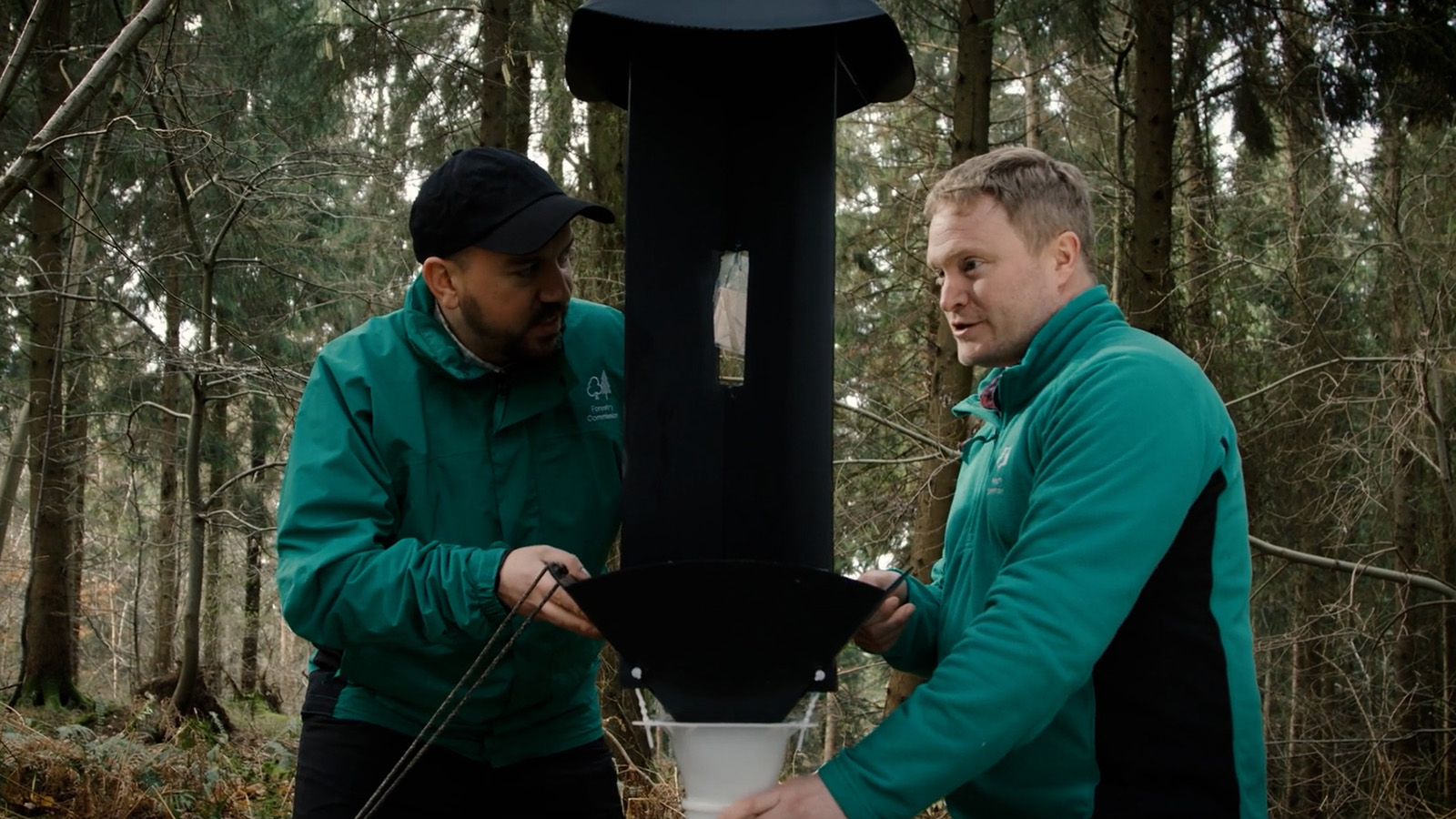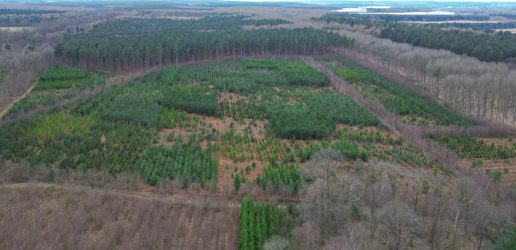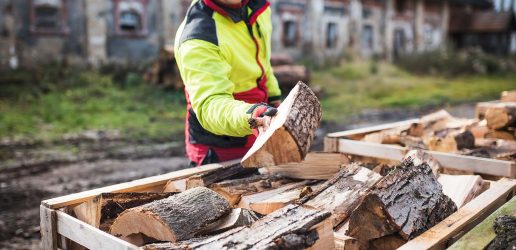Woodland owners and managers across the country are being asked to help expand a GB-wide network of pheromone traps. Taking part will help improve understanding of the eight-toothed spruce bark beetle, Ips typographus, and will further develop the early warning system preventing the establishment and potential spread of this damaging pest.
The Forest Lab Pest monitoring network launched in 2024, and last year saw nearly 50 woodland owners and managers across the country installing pheromone traps in private woodland.
More volunteers are now being sought who have spruce growing in woodland that they own or manage, and who are willing to host and collect samples by installing a spruce bark beetle trap.
Register your interest by Friday 16 January

The eight-toothed spruce bark beetle is a serious pest on spruce in Europe and has been found in the wider environment in England as part of routine plant health surveillance activity. If left uncontrolled, the beetle has the potential to cause significant damage to Britain’s spruce-based forestry and timber industries. Spruce trees are a major component of our forestry industry, making up around 60% of commercial planting in the UK and supporting thousands of jobs.
Dr Max Blake, Head of Entomology at Forest Research said: “Effective surveillance and forest management are vital in preventing the establishment and spread of Ips typographus and allows us to monitor arrivals of beetles blown over from continental Europe. We’re calling on woodland owners and managers to join the research programme and our network of stewardship scientists, to install a pheromone trap and share the data gathered.”
“This will contribute to vital scientific research and help protect our forests by building greater understanding of forest management best-practice when it comes to this pest. This will help woodland owners and managers to be informed and to do the right things to keep their woodlands resilient.”
Mike Rickards, co-founder of SMR Agrifor Ltd joined the research programme in 2024, and installed a pheromone trap in his parcel of woodland near Masham in North Yorkshire.
Mike said: “In the past couple of years we have taken down close to 0.4 acres [0.16 hectares] of Sitka spruce from which we make a variety of rustic products. With both felled timber and some windblown trees on-site, I recognised the potential risks posed by Ips. Having read about Forest Research looking for participants to install a pheromone trap, the call to action resonated with me so, I decided that participation in a UK-wide programme that helps to track Ips would be the right thing to do.”
Mike continued: “The whole process has been easy and straightforward. With the assistance of a simple video guide demonstrating how to assemble and install the trap, supported by a webinar and Q&A, the trap was easy to set up.”
“Every two weeks I simply send off a small plastic bottle container with insects from the trap to be analysed. So far, I’m pleased to say that no Ips has been found, and I am reassured that being part of a scientific monitoring program provides an element of insight and early warning of potential future infestation.”
Dr Gabriel Hemery, Chief Executive, Sylva Foundation added: “We have been humbled witnessing how the efforts of land managers have already contributed so much helpful information and data by joining Forest Lab. We look forward to welcoming new volunteers to this crucially important research.”
To find out more and express an interest, simply visit Sylva – myForest and Forest Lab Ips Project 2025 Expression Of Interest. Once expression of interest forms have been submitted via the survey link, applications will be reviewed and suitable candidates will be invited to a training webinar. All materials required to take part (including the trap) will be posted out to candidates.
Current evidence continues to suggest it is likely that the pest arrived through natural dispersal (blow over) from the continent where it is endemic. There is currently no evidence of within-UK spread of this beetle species, and all evidence gathered to date shows that eradication activities have been successful. For more information, about Ips typographus, visit Eight-toothed spruce bark beetle (Ips typographus) – GOV.UK
Forest Lab Pest monitoring network (FLPmonet) is a project in partnership with Sylva Foundation, Forestry Commission and Forest Research, and is funded by Defra’s Future Proofing Plant Health programme.
Case study: Mike Rickards, co-founder of SMR Agrifor Ltd
- Woodland location: Cultra Wood, Masham, North Yorkshire
- Land type: Dense plantation of Sitka spruce with a very small quantity of Scots pine, Norway spruce and silver birch
- Area: 6.6 acres [2.67 hectares]
- Approximate woodland age: 40-50 years
Recent News
View All news
Seventeen coniferous tree species show early promise for future commercial timber production in the UK
Researchers have set up a network of nine large scale experiments across the UK to test the suitability of 17 tree species as potential alternatives for future commercial timber production.
Forest Research are looking for people involved in the harvesting, processing, transport, import, or trade of firewood in Scotland to complete an important survey.

New guide to help local authorities conduct a people survey on the social value of their treescapes
A new step-by-step guide to help local authorities, charities and civic societies carry out a people survey to understand social and cultural values related to trees in their area, is now available.

Seventeen coniferous tree species show early promise for future commercial timber production in the UK
Researchers have set up a network of nine large scale experiments across the UK to test the suitability of 17 tree species as potential alternatives for future commercial timber production.
Forest Research are looking for people involved in the harvesting, processing, transport, import, or trade of firewood in Scotland to complete an important survey.

New guide to help local authorities conduct a people survey on the social value of their treescapes
A new step-by-step guide to help local authorities, charities and civic societies carry out a people survey to understand social and cultural values related to trees in their area, is now available.

